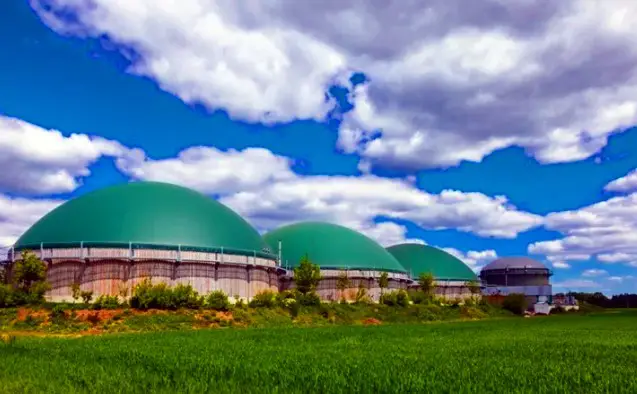
Food Waste Problem And Possible Solutions
With the increase in population, humanity once faced the daunting task of increasing food production. Which, thanks to science and GMOs, has been successfully done. In 2021, we are faced with the exact opposite problem, namely the problem of recycling food waste. Organic waste accounts for about 70 percent of all human waste. In this article, we will look at what is the danger and problem of food waste in the world, as well as their solutions. Let’s start in order.
Food waste in 2021
A third of all food produced is lost or wasted every year worldwide. In low-income countries, most of the loss occurs during production, while in developed countries a lot of food – about 100 kg per person per year – is wasted during the consumption stage. The Food and Agriculture Organization of the United Nations (FAO ) estimates that the average European generates 95-115 kg of food waste at the consumption stage, while sub-Saharan Africa generates 6-11 kg per year. Most of the food waste ends up in landfills in a still usable state. Why it happens? It is difficult to answer this question unequivocally. Here are just a few of the reasons:
- During cooking in catering establishments, as well as in our homes, we throw away the food ourselves, despite the fact that it is possible to make something else out of them. For example, an orange peel that could be used to make a zest. Banana peel, which, after drying, can be used as an organically rich compost for domestic plants. Or at least old bread that could serve as bread crumbs when cooking.
- Breakfasts in hotels, catering. This is a separate topic. According to sanitary standards, every day such establishments throw away a huge amount of ready-made, fresh and tasty food.
- In addition, there is a problem of buyers’ refusal to purchase “ugly” vegetables and fruits. For some reason, even
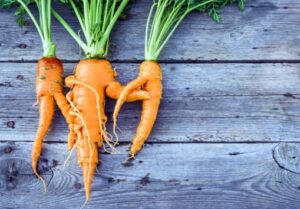 huge catering nets refuse to buy such products. Despite the fact that their only drawback is only appearance. Some kind of vegetable racism. The numbers are terrifying. Vegetables and fruits that do not fit into beauty standards account for about 30 percent of the total production.
huge catering nets refuse to buy such products. Despite the fact that their only drawback is only appearance. Some kind of vegetable racism. The numbers are terrifying. Vegetables and fruits that do not fit into beauty standards account for about 30 percent of the total production.
And there are a lot of such sources of food waste. Not to mention the fact that we simply cook or buy in stores more than we are able to eat.
Major problems of food waste for the world
We all know about plastic and these scary pictures, whole islands of this garbage. Plastic decomposes for thousands if not millions of years. But in the case of organic waste. What could be their danger if they are biodegradable? The fact is that most of the organic waste ends up in landfills – the worst possible disposal solution. Since air is not allowed into these mountains of garbage, it is unlikely that anyone would have thought of turning over these tons of waste from time to time in order to create compost. Which, in turn, did not work out that way, even in theory. Thus, food waste is decomposed by means of an anaerobic process, in which methane is released into the atmosphere, which is responsible for the greenhouse effect, global warming, and, accordingly, the melting of glaciers.
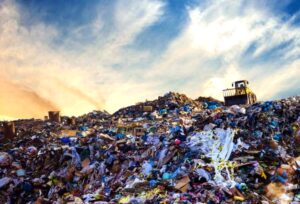
The company will take measures in the form of installing pipes for transporting gases from landfills. But this is still ineffective, including economically. Waste storage is a bad decision in itself. But it is food waste that does not particularly belong there.
But the most unpleasant thing is that we are sponsoring this. And we pay very good money for this: transportation + storage in landfills + tax for causing harm to the environment, all this comes out in a lump sum.
And this is all our money! Research by the University of Vermont suggests that Americans waste half of all their food (over 150kg per person), which is $ 160 billion a year. And, according to a UN report, the inhabitants of the planet in 2020, on average, threw 74 kg of food waste per person per year.
Ways to tackle the problem of food waste
Where there is a problem, there is always a solution. And you and I can turn the situation in our direction. Each of us is able to contribute to the improvement of the situation in order to preserve the planet for future generations. Here is a list of solution paths:
- Obviously, prevention can be better than curing the disease. If everyone starts sorting household waste and using products to the maximum (as we gave the example with the zest and banana peel), then the amount of waste received will be significantly reduced.
- In households, ideally everyone should have a small bucket for composting. This will not only help fight the world’s food waste problem, but it will also be an excellent fertilizer for your garden and home plants.
Want to know how to compost your food waste? Follow the link to our article.
Save the food! Small business offers some opportunities. Here are two examples of interesting applications that will help you save money and at the same time help improve the state of our planet.
1. TooGoodToGo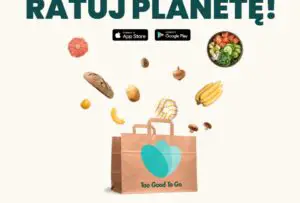
The international company Too Good To Go has created an application for the AppStore and Android. Works in a very simple way. Catering establishments are registered in the application and confirm that at the end of the working day they are ready to sell their dishes at cost to anyone who wants to. From the conditions – to pick up the order yourself and the willingness to pick up a random package. The company cannot foresee exactly what will remain of the products by the end of the working day. Therefore, the customer should keep in mind that anything can be in the package. Among others, this application is used, for example, by Costa Coffee .
2. WojnaWarzyw
As discussed above, one third of all vegetables and fruits produced are thrown away by farmers because they do not fit into “beauty standards”, despite the fact that they do not differ in taste and  quality from their “more successful relatives”. The solution to this situation was the private sale of such products. Everyone wins in this concept. Farmers pay less for waste collection. The customer pays less for their vegetables and fruits without losing product quality. The reseller wins twice as he does not pay for anything other than delivery. In fact, he sells products, which he receives completely free of charge. And everyone is happy! One of the successful examples of such a startup is the Polish entrepreneur Wojna Warzyw (pl. Vegetable War)
quality from their “more successful relatives”. The solution to this situation was the private sale of such products. Everyone wins in this concept. Farmers pay less for waste collection. The customer pays less for their vegetables and fruits without losing product quality. The reseller wins twice as he does not pay for anything other than delivery. In fact, he sells products, which he receives completely free of charge. And everyone is happy! One of the successful examples of such a startup is the Polish entrepreneur Wojna Warzyw (pl. Vegetable War)
But no matter how we try to reduce food waste, they, one way or another, were and will be. And this is not a problem as long as there is a good solution. And it is! Namely: recyclable materials.
You can read more about healthy eco-friendly habits in this article.
Food waste as a resource
Recyclable food waste is beneficial both ecologically and economically. So, how can food waste be used (provided that you and I take responsibility for the correct sorting of our household waste).
-
Composting
The most obvious solution for food waste disposal is, of course, composting. And if in the case of the anaerobic process, methane is released during the storage of waste, then when oxygen enters on a constant basis, in a few weeks we get high-quality organic compost, which will not only help the quality of the air and the planet as a whole, but also improve the health of plants in our garden. Composting can be used locally, which also reduces the economic and environmental costs for this type of processing.
We wrote about 12 methods of composting food waste at home here.
-
Biogas plant
You can go even further and make the most of your food waste. And this is what biogas plants serve. Such plantations are usually located near farms where there is a constant source of organic waste, be it hay / grass cuttings, or any other biodegradable waste. 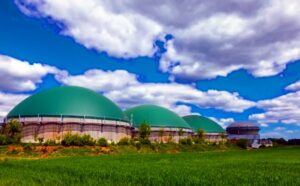 However, a biogas plant can be located anywhere. The principle of operation is identical to how landfill gas is released. The difference is that it takes less time. And, instead of being released into the atmosphere, the gas is collected in special containers, which are subsequently produced:
However, a biogas plant can be located anywhere. The principle of operation is identical to how landfill gas is released. The difference is that it takes less time. And, instead of being released into the atmosphere, the gas is collected in special containers, which are subsequently produced:
-
Electricity.
-
Heat (for greenhouses, ice making, etc.)
Conclusion
Food waste is a precious resource. The future is behind this resource. Which can provide us with heat, electricity, high-quality hummus for gardening and more. At the same time, not using this resource correctly, food waste can become nothing more than garbage. Garbage that not only loses its potential mentioned above, but also, conversely, poisoning you and your children, releasing landfill gas into the atmosphere. Do you still think that your contribution to the ecosystem does not matter? Check your ECO FOOTPRINT in one of the calculators.
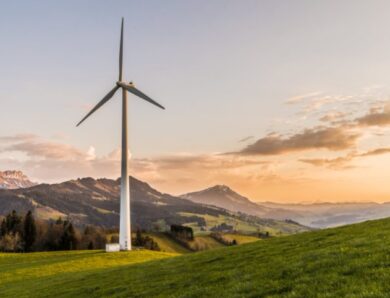
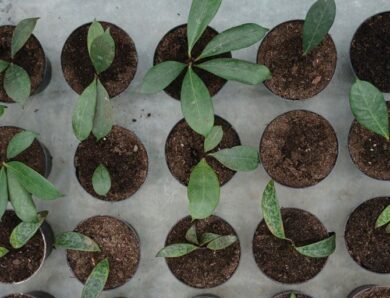



No Comment